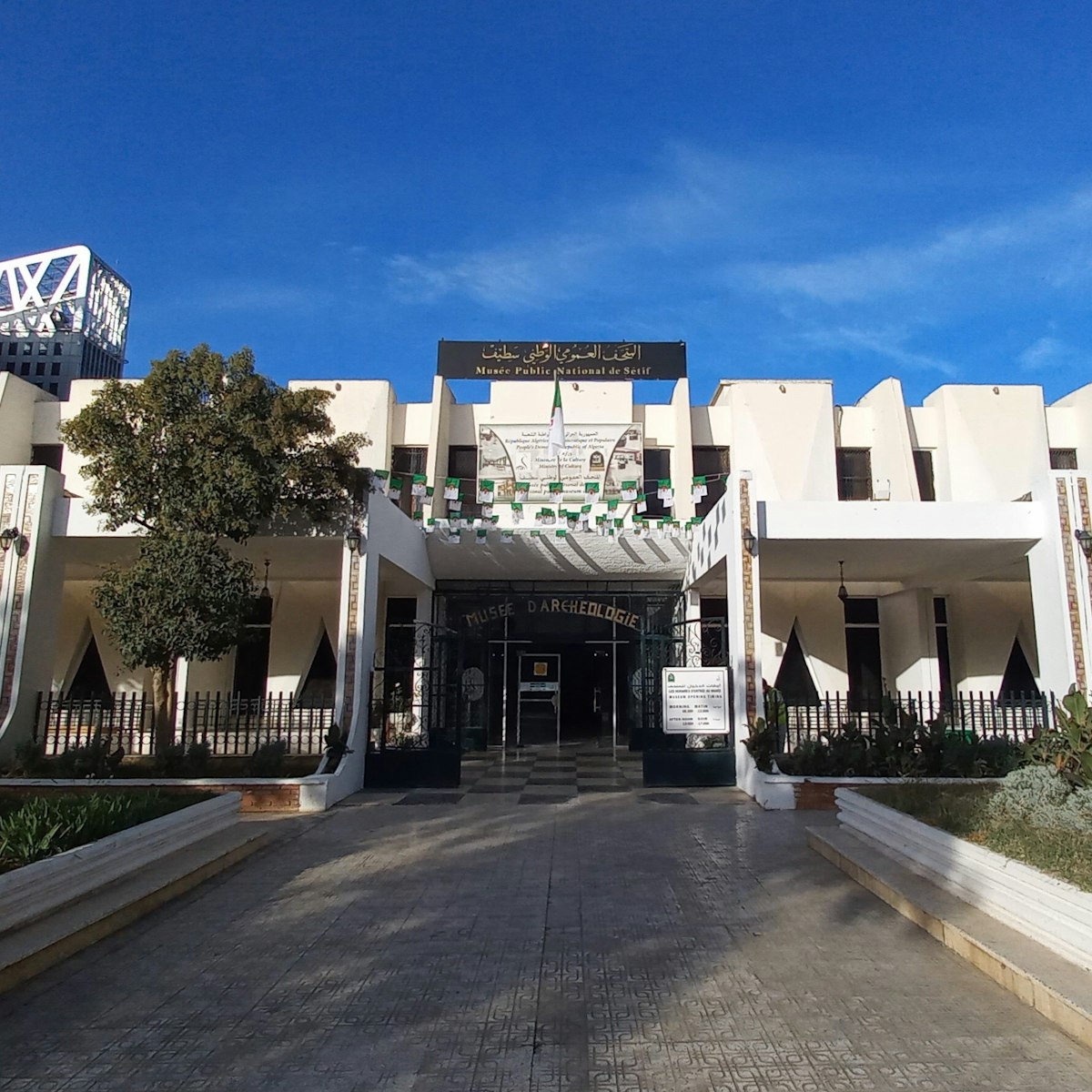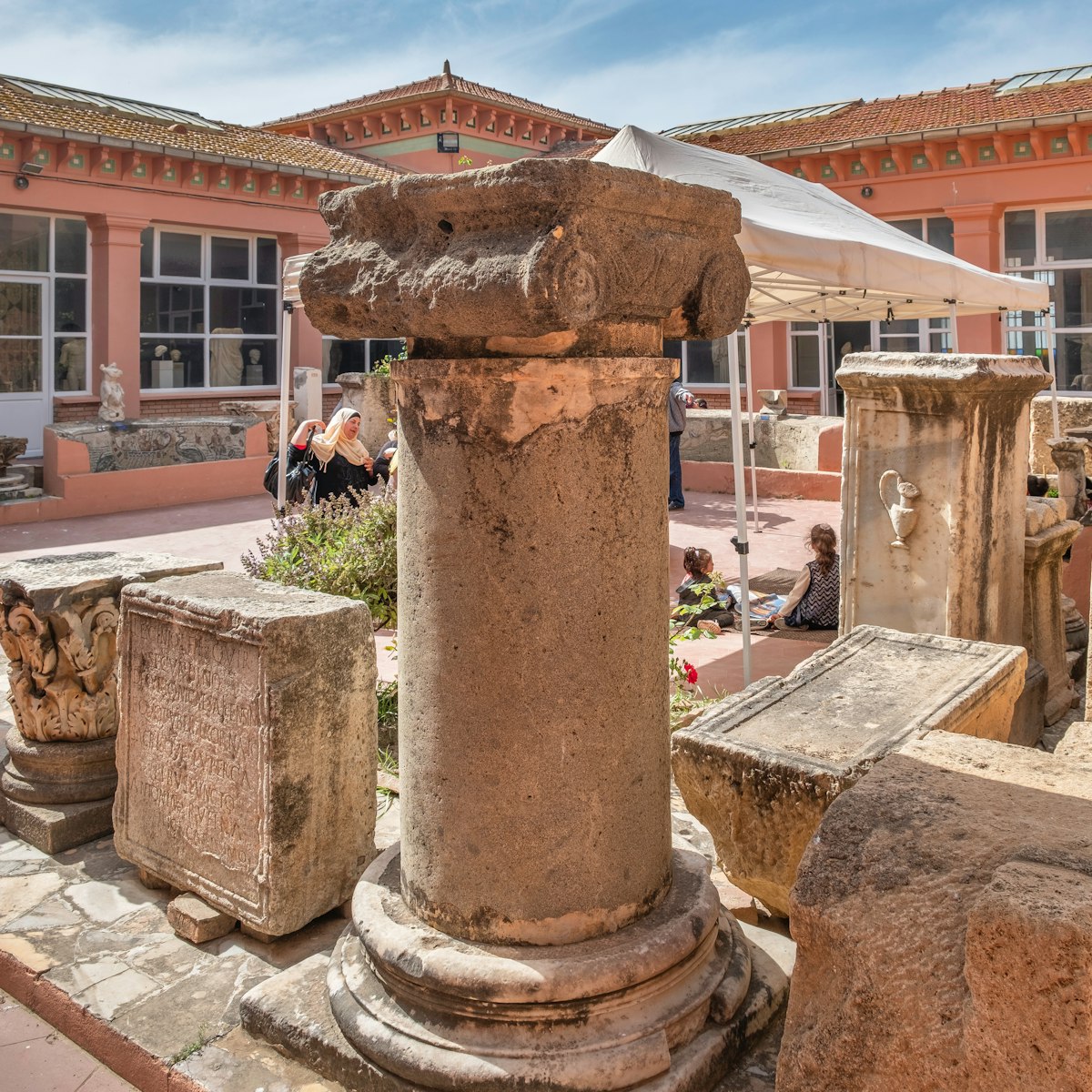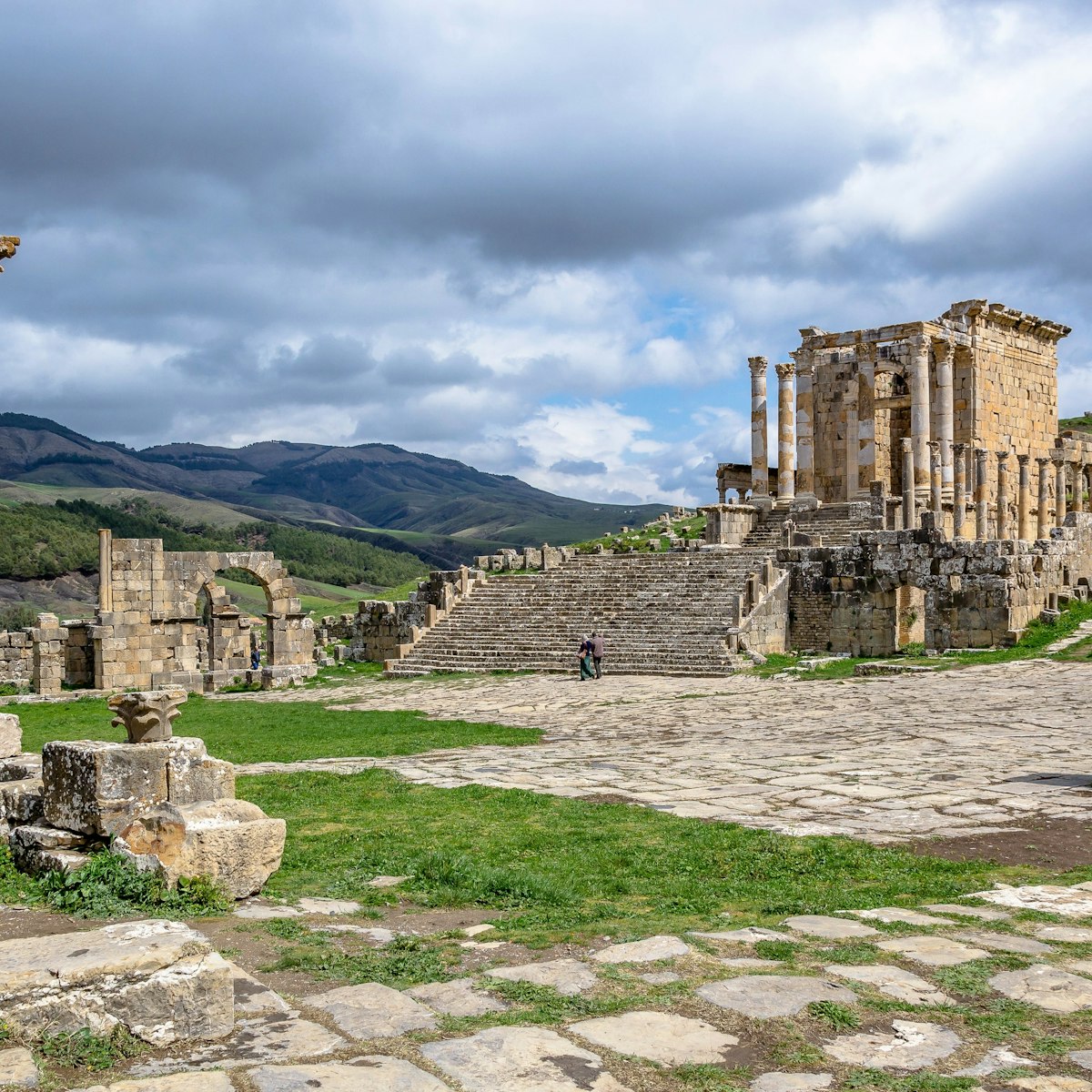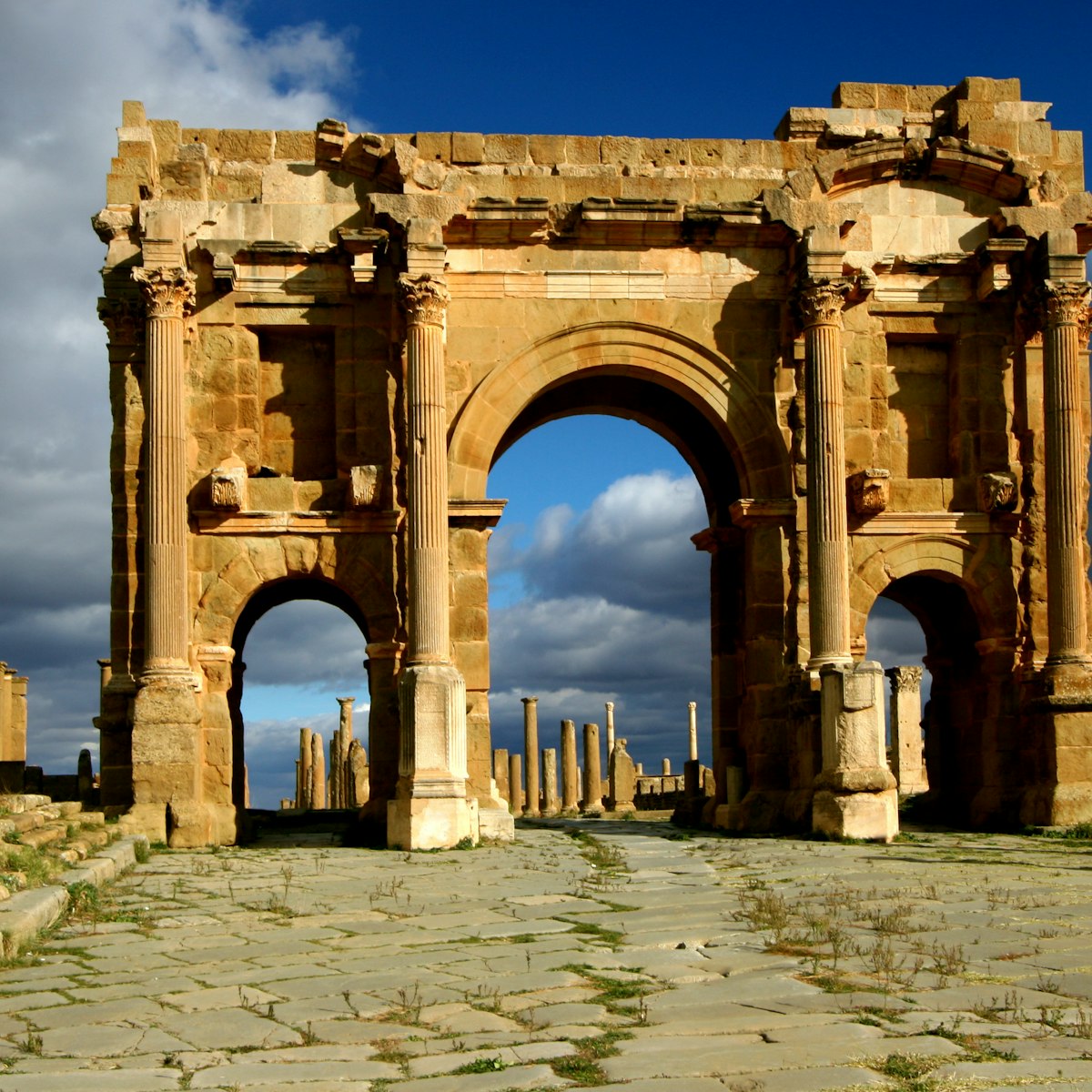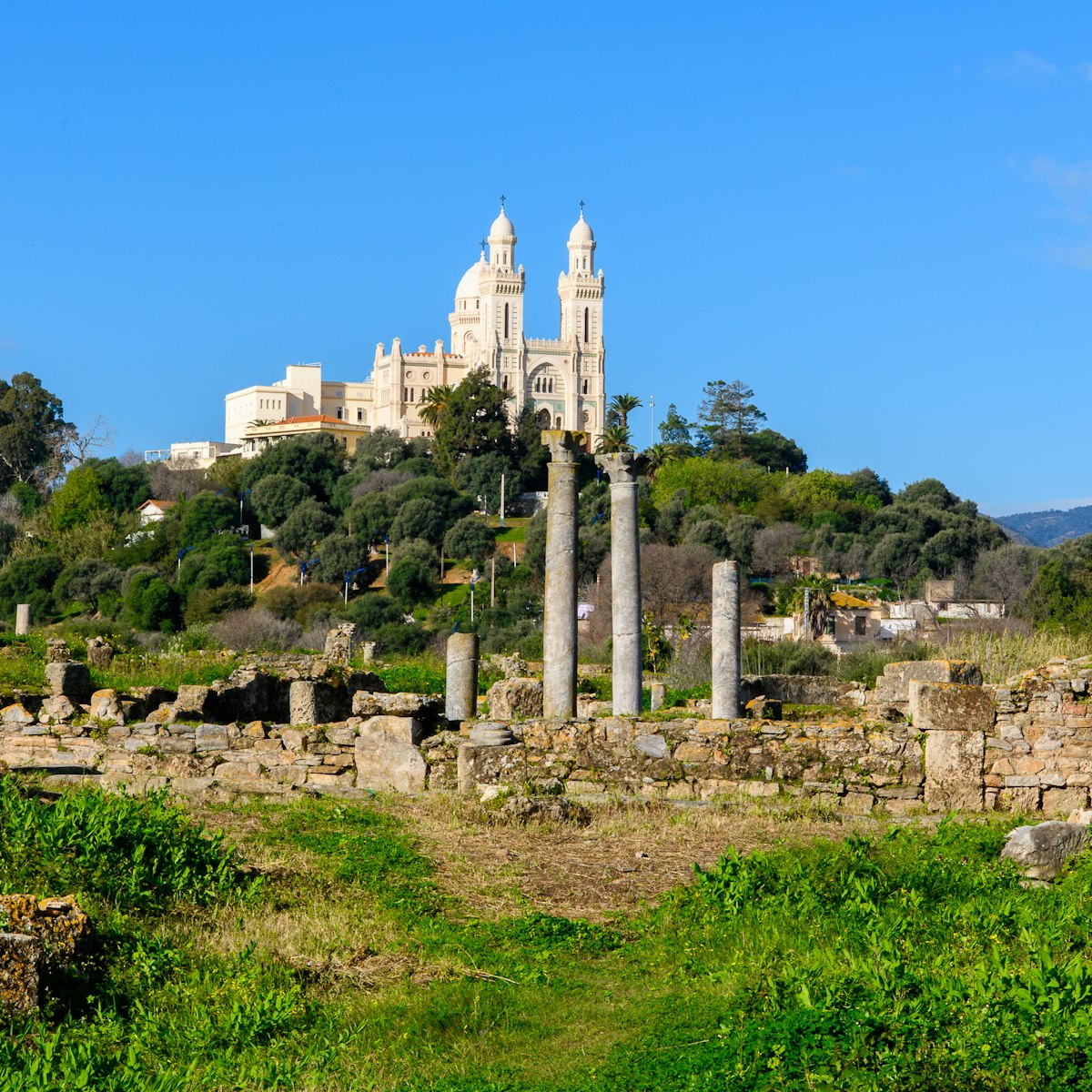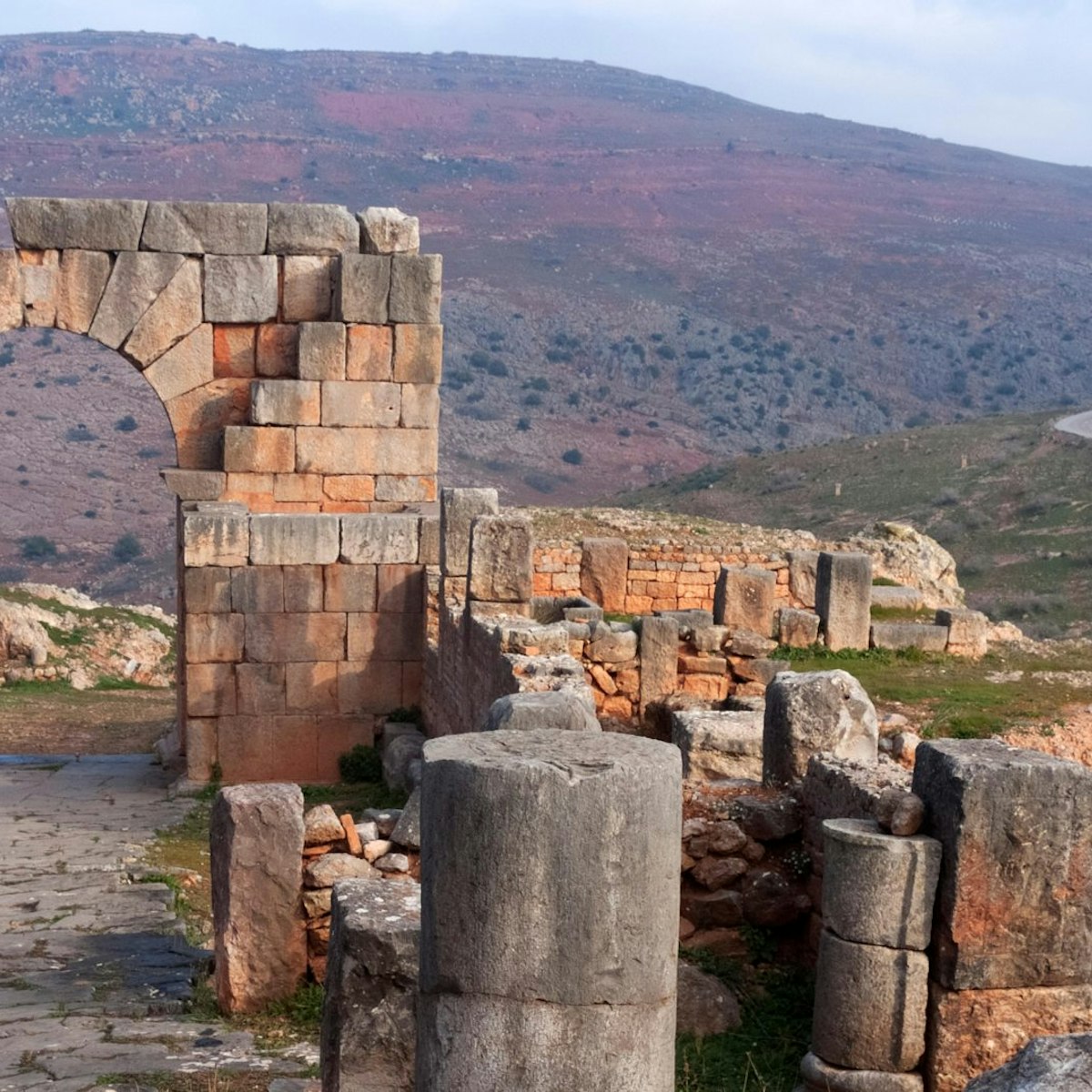
Hovering on a barren mountain slope, some 30km from Constantine, the ruined Roman town of Tiddis is perhaps the most impressively situated of all Algeria's Roman sites. However, the ruins themselves are fairly weather beaten and cannot compare with some of the more famous Roman cities around these parts.
There's been a settlement on this site at least since the Neolithic Berbers, but it was the Romans who developed Castellum Tidditanorum, which, as its name suggests, was a castellum or fortress, one of a series of fortified villages that surrounded the larger settlement at Constantine (then Cirta) and protected its territory.
The Romans arrived during the age of Augustus, but built much of what can now be seen in the 3rd century AD, adapting their fundamental rule of town planning – two straight central streets that cross at the heart of the community – to the curves of the site. Tiddis had no water sources, so one of the most interesting features of the houses here are the channels and cisterns. They were designed to preserve the rains that fell, on which the community depended during the long, hot summers.
Tombs
From the car park you are greeted by rock, striking red earth and the remains of several circular tombs, some of which are pre-Roman. The main entrance to the village is a classic Roman arch made of massive stones. You can still see where the gate hung and was locked. Much of what lies beyond the gate are little more than piles of rock, but there are still fascinating traces to be seen, including of houses; sanctuaries to the Roman gods Ceres, Vesta and Mithra; a solar god of Persian origin; olive presses; and later Christian baptisteries.
Villa of Mosaics
The cisterns can still be clearly seen on the upper part of the site: three large basins flowing into each other (between them they could hold some 350,000L of water). On the lower side of the site, the large Villa of Mosaics is marked by the pair of columns flanking its entrance, and here you can make out mosaics, the remains of an olive press, and baths that were later used as a pottery. The summit of the hill is topped with a sanctuary, originally dedicated to old African gods, rededicated by the Romans to their corn god Saturn, appropriate in a place where agriculture was so important.
There is no public transport to the site. You could take a bus or collective taxi from Constantine heading to Jijel, and jump out at the appropriate place, but you are unlikely to find return transport. So if you don’t have a vehicle, the surest way is to arrange a private taxi from Constantine. The return trip, including an hour or two at the ruins, is likely to cost around DA2500.
 Publish for free
Publish for free

 zzdtravel
zzdtravel

